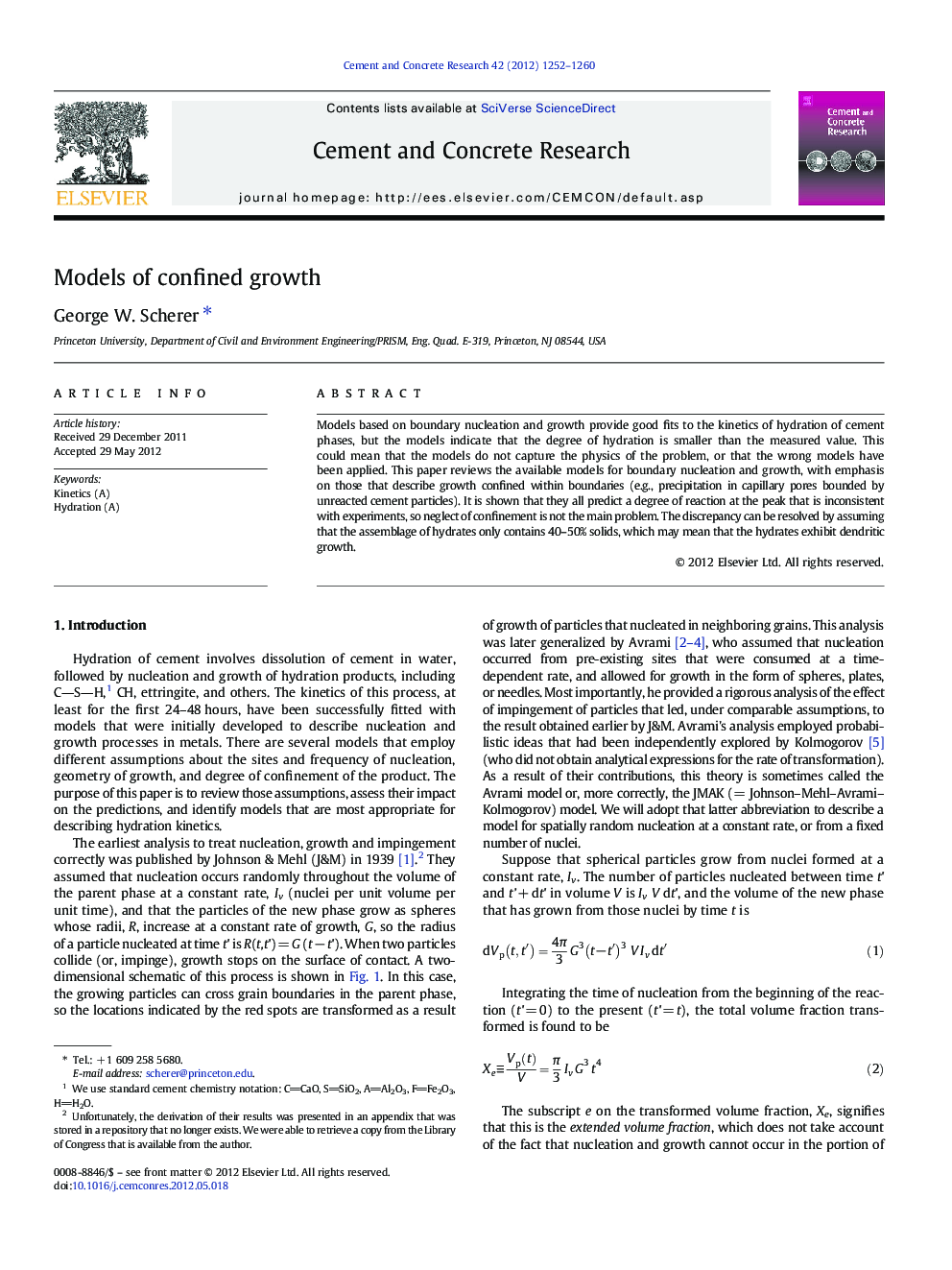| Article ID | Journal | Published Year | Pages | File Type |
|---|---|---|---|---|
| 1456560 | Cement and Concrete Research | 2012 | 9 Pages |
Models based on boundary nucleation and growth provide good fits to the kinetics of hydration of cement phases, but the models indicate that the degree of hydration is smaller than the measured value. This could mean that the models do not capture the physics of the problem, or that the wrong models have been applied. This paper reviews the available models for boundary nucleation and growth, with emphasis on those that describe growth confined within boundaries (e.g., precipitation in capillary pores bounded by unreacted cement particles). It is shown that they all predict a degree of reaction at the peak that is inconsistent with experiments, so neglect of confinement is not the main problem. The discrepancy can be resolved by assuming that the assemblage of hydrates only contains 40–50% solids, which may mean that the hydrates exhibit dendritic growth.
